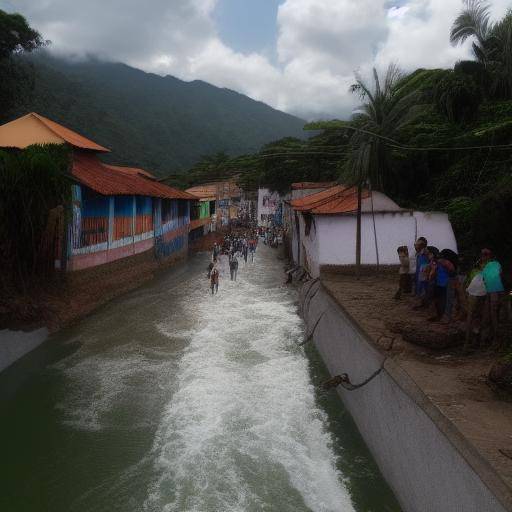
Introduction
In the depths of the waters of Colombia, there is a mythical creature known as "El Mohán". This legendary character is an integral part of the Colombian folklore and has captured the imagination of many generations. In this article, we will explore the fascinating history, cultural importance and beliefs surrounding El Mohán. We will also analyze its meaning for local fishermen and how it lasts in contemporary Colombia. Join us on this trip to the waters of Colombia and discover the mystery behind El Mohán.
History and Background
The Mohan, whose name is indigenous, has its roots in the legends of the coastal communities of Colombia. It is described as a half man, half beast, with a long and lush scalp, which possesses a powerful dominion over the waters. It is attributed mysterious actions and is said to protect the flora and fauna of the rivers. This figure has been transmitted from generation to generation through oral accounts and has gained significant historical relevance.
The Mohan in the Colombian Culture
Since ancient times, El Mohán has been venerated by various indigenous and Afro-descendant communities in Colombia. Within the local mythology, he is attributed supernatural powers and worshiped as protector of nature. His legends have permeated popular culture, inspiring literary works, music and crafts. In addition, its image has become a symbol of identity for communities living near the bodies of water.
Reflect on the Current Society
Although El Mohán is a figure rooted in the past of Colombia, his influence remains present in contemporary society. His myths and legends have transcended time and continue to be a source of inspiration in popular culture. In addition, many fishermen and inhabitants of the coastal areas still respect and fear the Mohan figure, and incorporate it into their traditions and rituals.
Deep analysis
Influence in the Fisheries Traditions
Colombian fishermen have a unique relationship with the figure of El Mohán. Many see in it a guardian of the rivers, whose whims can decide their captures. This belief moulds fishing practices in the region, where gratitude rituals are performed and permission is sought from El Mohán before undertaking fishing. These traditions reflect a profound connection between mythology and the daily lives of Colombian fishermen.
Cultural representations
Mohan has been represented in various forms of cultural expression. In literature, it is mentioned in popular stories and legends, while in music, some traditional songs narrate their exploits and their protective role. The crafts and sculptures that represent El Mohán are common in the coastal regions, and serve as both ornaments and protective amulets.
Myths and Legends
There are numerous stories about El Mohán that vary according to the region. In some, it is described as a benevolent being that helps fishermen and protects the animals from the river. In others, it is seen as a vengeful spirit that punishes those who do not respect nature. These legends not only entertain, but also teach important lessons about respect for the environment.
Comparison with Other Myths
Similarities with Other Cultures
Mohan has parallels in other cultures around the world. For example, in Nordic mythology, the Nøkk is a water spirit that can be benevolent or malevolent depending on how it is treated. In Japanese mythology, Kappa is a creature of rivers that can be dangerous, but it is also known for its wisdom. These similarities highlight how different cultures use mythological figures to explain and venerate nature.
Regional differences
While El Mohán is specific to Colombia, his essence as a guardian of water is found in many mythologies. The regional differences in their representation and the surrounding stories show the cultural diversity and the local importance of these myths.
Relevance and Modern Applications
Environmental Conservation
The figure of El Mohán can be used to promote environmental conservation. Its role as a protector of rivers and nature can serve as a symbol in educational campaigns that encourage respect and preservation of aquatic ecosystems.
Cultural tourism
Mohan also has significant potential in cultural tourism. The stories and legends that surround it can be used to attract tourists interested in folklore and Colombian culture, offering a rich experience in history and tradition.
Conclusion
The Mohan, the spirit of Colombian waters, is an emblematic figure in the mythology and culture of the country. Its presence in legends, fishing traditions and the daily life of coastal communities reflects a deep connection with nature and the aquatic environment. Through this article, we have explored its history, meaning and relevance in today's society, highlighting its lasting impact and ability to inspire and educate on the importance of preserving the environment.
This article has explored the rich tradition of El Mohán, revealing its cultural importance and its influence in the lives of Colombian communities. From its historical roots to its role today, The Mohan remains a powerful symbol of the connection between human beings and the surrounding waters.
